|
In Plain Sight: A fascinating investigation into UFOs and alien encounters
By Ross Coulthart Published in July 2021 430 Pages Thibault’s Score: 3/5 The information contained within this book is fascinating, but I am not a fan of the writing style. This is not a book that I would give to your average normie. After the release of the 2021 tic tac UFO video by the US Navy, and the 2023 release of the Customs and Border Patrol footage of UFOs, I was very confused. Prior to my discovery of some shocking official US government released footage, I have always been extremely skeptical about claims of extraterrestrial life. However, as someone who knows a lot about the organization of deep-states both present and historical, I am not surprised at all by cover-ups. When I saw the footage, I didn’t know what to believe anymore, so I picked up this book. This book documents many eyewitness testimonies, mainly by various former military officials, of encounters with literal “unidentified flying objects” as well as encounters with supposed recovered alien technology. All of the encounters described are fascinating, although I am not sure that all are credible. Some accounts seem extremely credible. For example, US pilot David Fravor who saw several UFOs in 2004 has a history of good behavior, and was able to film what he saw. At worst, he is honestly mistaken. Some of the people whose story he relates, such as former CIA agent Gordon Novel, were known compulsive liars. Others, such as retired rock star Tom DeLonge are plain weird. I wish that Coulthart had more carefully vetted which incidents he chose to cover. Instead of covering as many recent UFO incidents as possible, he should have sorted out all of the ones which are possible scams. His style of writing was a little bit annoying. He doesn’t come off as someone who is trying his best to be clinical or objective. Instead, he is opinionated. He tries to be just objective enough to pass off as unbiased enough, while still clearly promoting the notion that various governments are hiding information about extra-terrestrials. The thing that struck me the most is how credible many of the encounters are. Many of these accounts involve data collection from radar and other devices, multiple credible witnesses, and sometimes even (blurry) footage. Although there is no fire; there is clearly smoke. Another thing that struck me is that the witnesses that seemed credible to me were very consistent. They detected via instrumentation or saw orbs of light moving in very strange ways, sometimes going to the atmosphere or into water. The less credible witnesses seemed less consistent, seeing black helicopters, flying saucers, and little green men. I am not convinced that there are aliens. But I am 100% convinced that there are currently unexplainable orbs of light moving around in unusual patterns that are getting filmed, detected on radar, and seen. To me, Ockham's razor suggests the simple explanation that they are aliens. But maybe there are less plausible but more naturalistic explanations, such as ball lightning or some other phenomenon. What is clear is that most of the events described in this book are not hoaxes. This book is too fringe for your average reader. It requires a lot of mental effort to toss out the crap, and keep the treasure. I am always disheartened to learn that even readers will read books that I recommend with the mindset that either all information within the books is good or all of the information is bad. If you do choose to read this book, then listen to it as an audiobook. The book is read by the author, which is always by far the best. This makes it very easy and pleasant to listen to.
0 Comments
Nullification: How to Resist Federal Tyranny in the 21st Century
By Thomas E. Woods Published in June 2010 309 Pages Thibault’s Score: 1/5 I like the author Tom Woods, and have met the author personally several times. I love his podcast, I’ve done many of his courses, his lectures are great, and (many years ago, in high school) I read some of his books. However, I was really disappointed by Nullification. Based on my various interactions with him over the years, I actually agree politically with Tom Woods on many political issues, especially concerning Nullification. Because of this, I did not feel that his book was a strong defense of the ideas which we share. Nullification is the idea that state governments can vote to refuse to enforce federal laws that they find unconstitutional. This book feels extremely dated for a number of reasons. First, it was written before marijuana was legalized, before states became sanctuaries for illegal immigrants, and before gun control nullification was routine. At the time this book was written, I guess that nullification was fringe. Now it is mainstream. As a result, this book feels like a try-hard defense of an idea that is fringe. So much has changed in the 13 years since this book was written, that it mostly addresses irrelevant items. I also didn’t like the writing style. The historical segments were good. However, Tom Woods is too argumentative. I always feel like he is arguing with imaginary voices in his head. Instead, when I read a book, I want to be told a story. The best arguments never feel like arguments; they feel like entertaining narratives. Finally, I disagree with a major thrust of his argument: legalism. American conservatives are obsessed with “the rule of law.” Many arguments were predicated on the constitutionality or unconstitutionality of laws. This obviously doesn’t matter in the real world. The only thing that matters is ultimately physical coercion - who has the soldiers, and who has the guns. North Korea and China guarantee freedom of speech in their constitutions; just as the US constitution does. Clearly, in these two countries, there is no practical freedom of speech. Likewise, the argument that I would make for nullification isn’t legalistic. It is purely force based. If laws can be ignored, they can be nullified. If police and government officials can be bribed, coerced, or convinced to stop enforcing a given law - that is almost as good as nullification. In 2010, Americans lived in a society where there was still a semblance of the rule of law. Back then, to understand what I was talking about, you had to go to places like Brazil. Now, in 2023, it is amply clear to almost everyone that the law is just a pretense for politicians and police to do whatever they please. If you say something that is politically unpopular, the government will find trumped up charges, and prosecute you. Likewise, if you want to do something illegal, then just do it and hope that you don’t get caught. When laws can be safely ignored, revolution becomes unnecessary. I do not recommend this book. I barely made it to the appendix. It is dated. At best, if you were writing a history of the libertarian movement, this would be a somewhat interesting historical record of what libertarians believed circa 2010. Defenders of the Faith: Christianity and Islam Battle for the Soul of Europe, 1520-1536
By James Reston Jr. Published in July 2010 432 Pages Thibault’s Score: 4/5 Defenders of the Faith covers the intertwined lives of Holy Roman Emperor Charles V and Ottoman Sultan Suleiman the Magnificent. The book is history, but is written like an adventure novel. This makes reading it very easy. It is accessible to everyone, regardless of your knowledge of history, and has a lot of fascinating information in it. It has the tone, pacing, and intrigue that you would expect from a thriller. I could easily see this book being adapted into a Netflix mini-series. Charles the V was likely the most unfortunately lucky ruler in European history. Because of a fluke of lineage, he found himself holding several simultaneous positions at once: King of Burgundy, King of Spain, Archduke of Austria, and Holy Roman Empire. As a result of the fact that he held all of these titles simultaneously, his reign marked the first time that a monarch ruled a mostly united Europe since the time of collapse of Western Roman Empire. A small handful of remaining nations resisted his rule - notably France and England. His early rule would be marked by desperate attempts to diplomatically mollify, and later militarily pacify, these two troublemakers. His troubles would only increase when Martin Luther sparked the protestant reformation which would plunge Charles’ domain into civil war. The religious wars would culminate in a rogue army of his illegally sacking Rome and abducting the Pope, causing even more trouble. Finally, he would go to war with the Ottoman Turks on several fronts ranging from Morocco, to Spain, to the coasts of Italy, to Austria, to Greece. His counterpart, Suleiman the Magnificent, inherited a united realm and powerful centralized government from his tyrant father Selim the Grim. The Ottomans had two major historical enemies: the Mamluks in Egypt and the Levant, and the Shia Safavid Persians. The Mamluks had been fully conquered by his father Selim, and integrated into the Ottoman state. The Shia had been defeated, and Shia civilians had been genocidally suppressed. Unlike Charles V, Suleiman ruled a mostly united state. He wielded unquestioned authority. His reign would mark the apogee of the Ottoman Empire, and his death would mark the beginning of its slow decline. Suleiman, and his father Selim, would head a unified tyrannical state that would only be surpassed by the likes of France under Napoleon, Germany under Hitler, or the Soviet Union under Stalin. In the clash between the shattered European realm, and the united Ottoman Empire, Charles V was the underdog. Despite all the challenges that were thrown against him, Charles the V would persevere against all odds, successfully defending Europe. This book won’t give you any profound insights into the nature of European history. It will not fundamentally rewrite your understanding of the relationships between different nations. It will not help you master current day politics or economics. For that kind of historical read, you might want to pick up some of the other titles that I have recently reviewed. But if you are looking for a light, educational, and entertaining historical read, then I recommend this book. One Nation Under Blackmail (Volumes 1 and 2)
By Whitney Webb Published in September 2022 544 Pages - Volume 1, 432 Pages - Volume 2 (976 total) Thibault’s Score: 4/5 One National Under Blackmail is a remarkably well researched two volume history of the intersections in-between US organized crime and intelligence agencies. Overall, it is a remarkably well researched book. Whitney Webb has the makings of one of the great investigative journalists of our time. In order to grab the reader’s attention, Webb focuses on the headline grabbing Jeffrey Epstein story in her introduction. However, she quickly sheds her narrow focus on current events to instead cover a more expansive timeline of events, starting with events surrounding J Edgar Hoover’s tenure as director of the FBI and ending with Jeffrey Epstein’s arrest. Since their very inception, organized crime has had a parasitic relationship with US intelligence agencies. We often hear about the revolving door in-between government agencies such as the Securities and Exchange Commission and Wall Street - where former hedge fund managers become regulators and vice versa. I did not realize that a similar revolving door existed in between organized crime and the intelligence agencies. Just as Wall Street hedge fund managers being active in regulatory activities means that regulators pass rules that favor pre-existing players; the same phenomenon happens with intelligence agencies and organized crime. As a result, you get strange effects where, for example, in the early 1980s almost all of the most dangerous drugs being sold illegally in the US were sold by intelligence connected assets. I learned a lot of staggering, mind bending stories. Did you know that: -The OSS (precursor to the CIA) drew many of its initial recruits from organized crime? -After the nationalist Taiwanese government fled mainland China, it funded almost its entire government through the sale of opium? And to support the anti-communist Taiwanese government, the CIA indirectly facilitated heroin sales in the United States? -FBI director J Edgar Hoover was a transvestite who was caught having gay sex with fellow FBI agents, then blackmailed by the Italian mafia? And thanks to this blackmail, the mafia was protected from the FBI for decades? -The Watergate hotel was a well known location for high level US politicians to meet prostitutes, and Richard Nixon was likely spying on guests in order to blackmail them? -In the 1980s, the CIA was caught smuggling large amounts of crack-cocaine into the US, selling it in black neighborhoods, and using it to fund black ops? -Israel sold bugged databases software to nearly all US military agencies in the 1990s which allowed it to spy on the internal operations of the US government? -In the late 1990s, a child sex trafficking ring was busted which involved many high-level republicans, and both parties conspired to prevent the story from reaching the media? -Jeffrey Epstein had significant provable intelligence connections, and was likely helping intelligence agencies blackmail key US politicians and businesspeople? This is one of those books that, no matter how much you think you know, will fundamentally change the way you see the government. The research is phenomenal. Webb clearly had to go into minute detail through massive historical archives to piece together the day by day reconstruction of key events. This is not a conspiracy book - she never makes any wild guesses, and never has any outlandish speculation. I did my own research, and was horrified to find out that of Webb’s claims - even the seemingly outlandish ones - can be completely backed up by the evidence. The single reproach that I have with the book is that the writing style can - at times - be confusing. The large numbers of people, organizations, and events discussed sometimes make it hard to follow. Also, at first, I didn’t realize that each chapter was a separate short story which covered a specific incident or a specific person. As a result, don’t read this expecting a coherent narrative throughout the book. Finally, a word of warning for parents. Some parts of the book describe extremely graphic scenes of torture, sexual blackmail, and other horrific scenes. Webb is always careful to tone down all descriptions, but it cannot be avoided in certain instances. I highly recommend this book to anyone interested in reading a well-researched and non-conspiratorial history about the hidden hand that influences American politics. God’s Shadow: Sultan Selim, His Ottoman Empire, and the Making of the Modern World
By Alan Mikhail Published in August 2020 496 Pages Thibault’s Score: 3/5 Sultan Selim the Grim of the Ottoman Empire only reigned for about 8 years. Despite his short reign, he completely transformed the Ottoman Empire - growing its territory by about 70%. Selim the Grim and his son Suleiman the Magnificent’s reigns mark the peak of the Ottoman Empire. Selim would expand the Ottoman Empire over the course of two major wars: one against the Safavid Persian Empire where he would seize a small but economically important piece of territory, and the other against the Egyptian Mamluk Empire where he would seize all of North Africa and Arabia. This book doesn’t focus on Selim as a person, which makes it far more interesting. Instead, it focuses on the history of the Ottoman Empire in general during Selim’s childhood, his own reign, and the reign of his son. I hate it when books go into the minutia of historical figures, and was pleasantly surprised that this book spent far more time exploring the world that Selim inhabited rather than Selim’s personal life. If anything, this book strays too far in the opposite direction, going into extremely lengthy tangents about Spanish colonization of the new world, and Persian trade with India. I found many of the tangents to be interesting; but many more to be distracting and unnecessary. I would say that at least a third of the book are tangents that don’t directly relate to the reign of Selim. Some were fascinating, such as the ones that describe how the Spanish explorers misidentified native americans as Ottoman Turkish Muslims; and others such as the political intrigues of Charles the V (who never interacts with Selim, even indirectly) were quite boring. The Ottoman Empire was, by far, one of the most brutal and authoritarian states of the early modern era. Alain Mikhail, like many other modern authors, tends to downplay the authoritarian tendencies, sexual violence, and degeneracy of the Ottoman Empire. This might be because our modern political circumstances make it dangerous to criticize Islam, or because historians who study a given field tend to view that subject with rose-tinted glasses. Mikhail briefly touches on the extreme brutality and genocidal horrors perpetrated by the Ottoman state; but then dismisses them and goes on to describe how tolerant Ottoman society was. Compared to contemporary societies such as those in the Italian city states, previous societies such as the Abbasid Caliphate, or the Byzantine Empire, the Ottoman Empire is at best equally bad. This book was quite boring at times, and was by no means a page turner. I recommend it to people who have already read other books about the Ottoman Empire and want to go deeper; but would not recommend it to most ordinary readers. Empires of the Sea
By Roger Crowley Published in May 2009 368 Pages Thibault’s Score: 4/5 Empires of the Sea is an account of the naval battles fought in-between Christianity and Islam in the early modern era. At the dawn of the 15th century, the Ottoman Empire was rapidly expanding. Constantinople fell in 1453. The Persians were defeated in 1514. The last crusader bastion - Rhodes - fell in 1522. The Hungarians were destroyed in 1526. The Ottoman end goal was the capture of Rome, and the creation of a new Islamic Roman Empire. The forces of Christianity were worried. Almost all of the major battles in the later half of the 1500s would take place on the Mediterranean Sea. The key players would be Habsburg Spain, Venice, Genoa, the various remnant crusader orders, and to a lesser extent France. This book first covers the Ottoman capture of Rhodes. It then goes on to explain the strategic considerations that went into Westward maritime expansion. Naturally, Crowley follows by giving terrifying accounts of the North African pirates in Ottoman service. Then come the three major battles of Malta, Cyprus, and Lepanto. What is fascinating is how fast the world was changing politically and technologically. Typically, I read about earlier periods, usually the Middle Ages. The world of the Middle Ages is technologically flat, and politically fragmented. However, the world of the early modern mediterranean is very different. First, the discovery of the new world completely changes the dynamics of European expansion. Technological improvements - namely in ship technology and gunpowder technology - completely transform the dynamics of individual battles. Maritime-land operations, such as the capture of coastal fortresses, are critical. Sieges last for months rather than years. Finally, Islam is no longer dynamic and innovative. For the first time, Muslims are falling far behind Europeans, mostly due to their tyrannical governments. I’ve read almost every book by Roger Crowley, and can confirm that he is one of my favorite historians. His books always manage to paint a vivid blood-curdling image of what seeing the battles in person might have been like. They are fast paced, manage to capture the essence of key characters, and perfectly walk the fine line between giving too much and too little context. I recommend this book highly to anyone who is looking for an easy introduction to the world of early modern geopolitics. You can likely pick up, and appreciate, this book without much prior historical knowledge. It will not give you revolutionary insights about the course of history, fate of modern nations, or even the early modern era - but it will entertain and inform you. The Ottomans: Khans, Caesars, and Caliphs
By Marc David Baer Published in October 2021 560 Pages Thibault’s Score: 4/5 There are few civilizations that were more authoritarian, sexually degenerate, and genocidal than the Ottoman Empire. Whatever flaws its predecessors - the various Turkic Khanates, the Byzantines, and the Caliphates had - the Ottomans took to an extreme. By contrast, modern Turkey is an incredibly prosperous, safe, and clean place. This book really helped me realize how far Turkey has come in just one century. Weirdly enough, this book was intended as a defense of the Ottoman Empire. However, the information contained within is damning. Baer refutes the idea that the Ottomans were an authoritarian police state by highlighting repeated instances of brutal oppression; challenges the stereotype of Ottoman hypersexuality by recounting stories of Sufis with pierced penises openly begging for money in the streets; and promotes the idea that the Ottoman Empire was a tolerant society by retelling the history of 500 years of repeated genocide. One detail about the Ottoman Empire stands out to me - its particular strain of authoritarianism is surprisingly modern. Perhaps the modernity of its oppressive techniques is what Baer, likely an academic Western liberal, finds attractive about it. As far as I can tell, it was one of the first states that used tolerance as a tool to fight against reactionary opponents. By promoting religious minorities into high office; the Ottomans found people who would greenlight all centralizing and statist policies which would be opposed by traditionalist Muslims. By supporting various sexually degenerate Sufi orders; the Ottomans broke down the family values of troublesome minorities such the Arabs and Armenians. By creating a Sheik who determined what “was and wasn’t” Islamic, the Ottomans perverted the teachings of Islam to support their regime. After reading about other, earlier, Islamic societies I have developed a deep appreciation for Islam. The very aspects that attract me to Islam are the very aspects that repulse me from the Ottomans. Islam is a religion that explicitly restrains the power of the state, and explicitly promotes individualism. This view of Islam is the view of scholars such as Ibn Khaldun, of the Golden Age Abbasid Mutazila, and of various fundamentalist heretics like the Ismaili Shia and Kharijites. The Ottomans take the opposite approach. They created a new Islam that sanctioned all government actions. Islam went from a tool of small government, capitalism, and family values into an ideology that legitimized statism, centrally planned economies, and the nation. The Ottomans were one of the most evil regimes in all of human history. I would rank them up there with the Soviet Union, Nazi Germany, King Leopold’s Belgium, the Mongol Empire of Chinggis, and the various degenerate Chinese dynasties. This book - in its attempt to defend the Ottomans - proves my point. I would recommend reading this book if you want to learn more about Ottoman, Islamic, or Turkish history. Andy, if you are reading this, then I recommend this book to you in particular. 1453: The Holy War for Constantinople and the Clash of Islam and the West
By Roger Crowley Published in 2005 328 Pages Thibault’s Score: 4/5 This book is a chilling hour by hour account of the siege of Constantinople. Although the author has made up no details, it reads like historical fiction. He does a great job at explaining the key personalities involved in the siege such as the last emperor Constantine 11, Sultan Mehmed II, and survivors such as Cardinal Isodore of Kiev. The fall of Constantinople, in 1453, is an incredibly important event. The last remnants of the Eastern Roman empire were wiped out, once and for all. Although Crowley does not bring this up, to me it marks the end of the middle ages and the beginning of the early modern period. The siege of Constantinople witnessed remarkable acts of heroism on behalf of the defenders. A tiny force of a few thousand Greeks, Italians, and Slavs managed to hold off 130,000 Turkish troops for nearly three months. In the process, they managed to inflict massive casualties on the attackers. The siege ended tragically. The sack of Constantinople in 1453 stands out as one of the most brutal sacks of the Middle Ages The civilian population was slaughtered, enslaved, raped, and decimated. Crowley gives many horrific and stunningly clear accounts of the wholesale destruction of the city. I found the writing style to be incredibly engaging. It was a page turner, keeping me hooked the whole time. It also is very accessible to people who know little or nothing about history. This is the kind of book that anyone, at any level of historical learning, can appreciate. However, I do caution that many of the descriptions of the massacres can be very graphic. Ibn Khaldun: An Intellectual Biography
By Robert Irwin Published in February 2018 272 Pages Thibault’s Score: 4/5 Ibn Khaldun: An Intellectual Biography is a study guide for Ibn Khaldun’s Muqaddimah. I find reading historical books to be very difficult, especially if they are more than a few centuries old. Even when translated in modern English, I often lack the necessary context to really understand many of the key points. This challenge is compounded when dealing with non-Western cultures that I am less familiar with, such as the Middle East. This book is a short study guide to the work of Ibn Khaldun. Irwin neatly summarizes Khaldun’s ideas, gives necessary historical context, and explains his possible influences. Writing this sort of book, and making it good, is extremely challenging. Usually, reading this kind of book is either an exercise in pedantic pseudo-intellectualism or is the equivalent of reading the phone book. Far too many of these books use hollow but vaguely intellectual sounding gobbledygook to make their books sound more profound. A good hint is when they talk about the “dimensionality” of a given topic or the “communicativeness of ideas.” Irwin makes none of the fatal sins that authors usually make when writing this sort of book. He avoids using all inflated language, instead choosing the path of conciseness and clarity. Ibn Khaldun was an endless source of ideas. He covered topics as diverse as the Kharijite revolution of North Africa, genie hunting in the deserts, and developed theories of taxation that are remarkably similar to those of 20th century economist Arthur Laffer. However, Ibn Khaldun is most well known for his concept of Asabiyyah. Asabiyyah is an Arabic word that doesn’t translate well into English. It has been alternatively translated with notions as diverse as “esprit de corps,” “ethnocentrism,” or “love for freedom.” None of these words succeed in capturing its essence. The core idea of Asabiyyah is that history is cyclical. He divides the world into two groups. One one side, there are tough desert people (Bedouins). These are either nomads or subsistence farmers. These bedouins develop simple pious religious ethics, a tradition of personal austerity, have group solidarity, have anti-state political ideologies / support small government, and are tough. These traits are collectively called Asabiyyah. On the other side, there are sedentary peoples living in cities. They lose their Asabiyyah - namely they discard religion, have profligate personal morals, have strong out-group preferences, want big government in order to compensate for their poor morals, and are generally weak. Over time, the powerful city-based nations and states decline. As the city dwellers lose their Asabiyyah, tough desert peoples come, and kill their political elites. The Bedouins become the new elites because they have more Asabiyyah. However, the city life corrupts the Bedouins. Over time, the Bedouins lose their Asabiyyah - coming to emulate the very city dwellers their forefathers defeated. This opens the gate for a new generation of tough nomads to replace them. There is some debate about the applicability of the theory of Asabiyyah. Some historians and commentators think that it only strictly applies to the desert tribes of North Africa. Others would take a more generalized interpretation, seeing non-desert peoples like the Germanic goths or Mongols following similar developmental paths. The book concludes with Irwin talking about how various different groups perceived Ibn Khaldun over time. Many Muslims initially rejected or ignored Ibn Khaldun, as Islam entered its internal dark ages around the time Europe entered the renaissance. Ibn Khaldun was rediscovered by the French when they colonized North Africa, and the French used Khaldun’s work to point out how backwards Islamic societies were. Later, Ibn Khaldun was rehabilitated, and new translations were made. These new translations used Ibn Khaldun to justify Arab nationalism, and the removal of the colonial authorities. Ibn Khaldun also influenced science fiction, with Frank Herbert’s Dune series explicitly modeled on Ibn Khaldun’s Muqaddimah. So do I recommend this book? Probably not, it's quite niche, and not of interest for most readers. But, if you are planning on reading the Muqaddimah or any other surviving fragmentary works by Ibn Khaldun, then it is the must read study guide. I wish other Medieval authors had study guides as good as this - especially with authors like Thomas of Aquinas or Paul the Deacon. Instead, it looks like I will be stuck with the fluffy pseudointellectual study guides when I read those books. In God’s Path: The Arab Conquests and the Creation of an Islamic Empire
By Robert G. Hoyland Published in 2014 Thibault’s Score: 3/5 The Arabs burst out of Arabia with incredible speed, rapidly conquering the entire known world. Within two hundred years, Islam had spread from Morocco to Malaysia. The speed of the Islamic conquests often baffles readers. However, the author points out that Christianity spread at a similar pace. He opens the book by telling a legend about some Christian saints who were fleeing the persecution of a pagan emperor. They hide in a cave and go to sleep. When they wake up, there are churches everywhere and the whole world has become Christian. To help them escape persecution, God had put them to sleep for 200 years. Another key element is that Islam was mostly a religion that only applied to elites. Conversion was discouraged (at first). As a result, most regions remained Zoroastrian, Christian, Jewish, or pagan for centuries. For example, in Egypt, the bulk of the population remained Christian until after the Crusades. In Persia, Muslims came to dominate the cities, but the mountainous and rural regions would remain Zoroastrian for four hundred years after the conquest. There is a particularly fascinating aspect of this book for anarchist-adjacent readers like me: the conquering armies were stateless and leaderless. The Caliphs were mostly religious figures, and had little practical authority or say about what happened on the field. Instead, the conquests were spearheaded by a decentralized network of warlords. If you want to learn about how anarchist-adjacent armies can conquer vast swaths of land, then this might be an interesting book for you. The decentralized nature of warfare resulted in a wide variety of outcomes. Some warlords were extremely merciful, while others were cruel. This can be seen during the siege of Damascus. Damascus, in modern day Syria, was a Byzantine fortress. It was attacked by two separate Muslim war parties that teamed up. One party stormed the citadel, and began a slaughter. In the early minutes of the slaughter, the Byzantine general (a man called Thomas) surrendered to the other Muslim party. This party granted the soldiers and civilians safe passage, and moved to restrain their peers in the slaughter. This angered the other Muslim commander who had to cancel his sack of the city. The truce, however, only lasted three days. So, the angered commander stalked the escaping Byzantine soldiers and civilians, waiting for the three days to end. At the dawn of the fourth day, he intercepted them before they arrived in Antioch, slaughtering and enslaving them. There was a great deal of discontent in the Sassanid Persian and Byzantine Empires. Both suffered from significant internal dissent and hatred of the central authorities. As a result, there were many regions inhabited by heretics who (without converting to Islam) willingly rose up in arms with the Muslims, aiding them in their conquests. Over time, especially when Muawia took over after the death of Ali, the Caliphs attempted to consolidate power and form states. They went from a role similar to those of 21st century popes into those of a king. These changes were resisted by many, notably the Kharijites and Shia. Many opposition groups would oppose the transformation of Islam, and maintain semi-stateless societies for centuries. Finally, ethnic tensions would cause the first Islamic states to crumble. Many Muslims wanted to place an emphasis on the racial superiority of Arabs. Others said that anyone who converted to Islam were Arabs. A third faction focused on Islam itself, saying that race was irrelevant, and pointed out that many of the early Muslims in Mohammed’s party had been black slaves. These ethnic tensions boiled down into race-wars. Ultimately, the pro-diversity factions won, and the pro-Arab factions lost in repeated crushing defeats. A more tolerant Sunni state - the Abbasid Caliphate - would emerge. This Caliphate would welcome the innovations of all peoples and religions, ushering in the golden age of Islam. This book is pretty well written. It avoids a lot of the hair-splitting which academics love to engage in to a large extent. However, it might be difficult to follow along if you are completely new to Islamic history. If you have a very rough idea of who major figures like Ali, Muawia, or Abu Muslim are - and have a rough idea of what the Rashidun, Umayyad, and Abbasid Caliphates are, then you will enjoy this book. Otherwise, you may need to supplement it with Wikipedia, YouTube videos, etc… |
Thibault SerletMost of my articles are book reviews, but I also write about many other topics. Archives
December 2023
Categories |
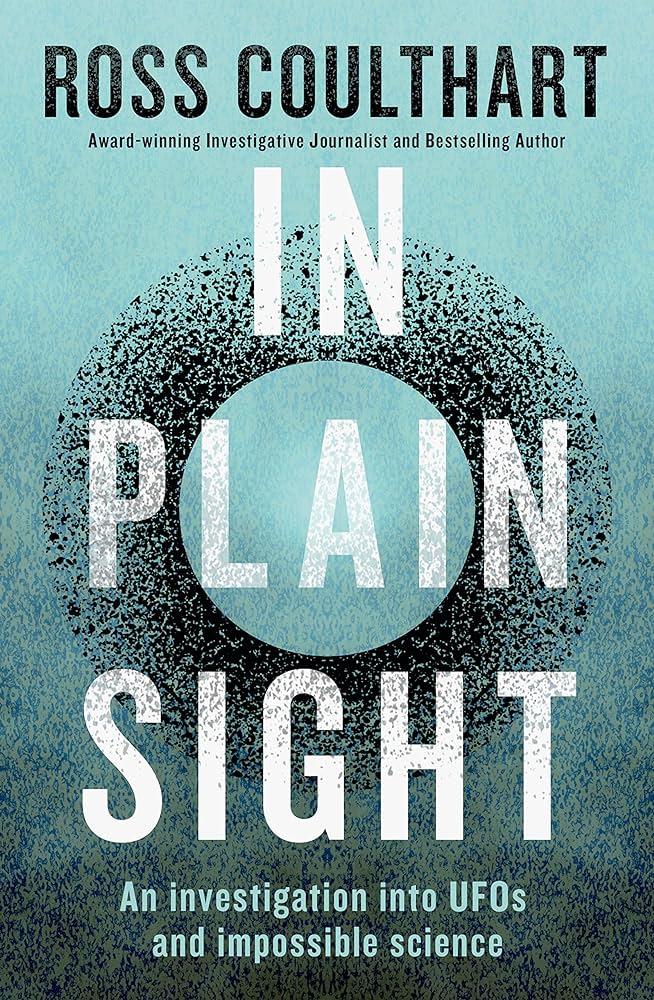
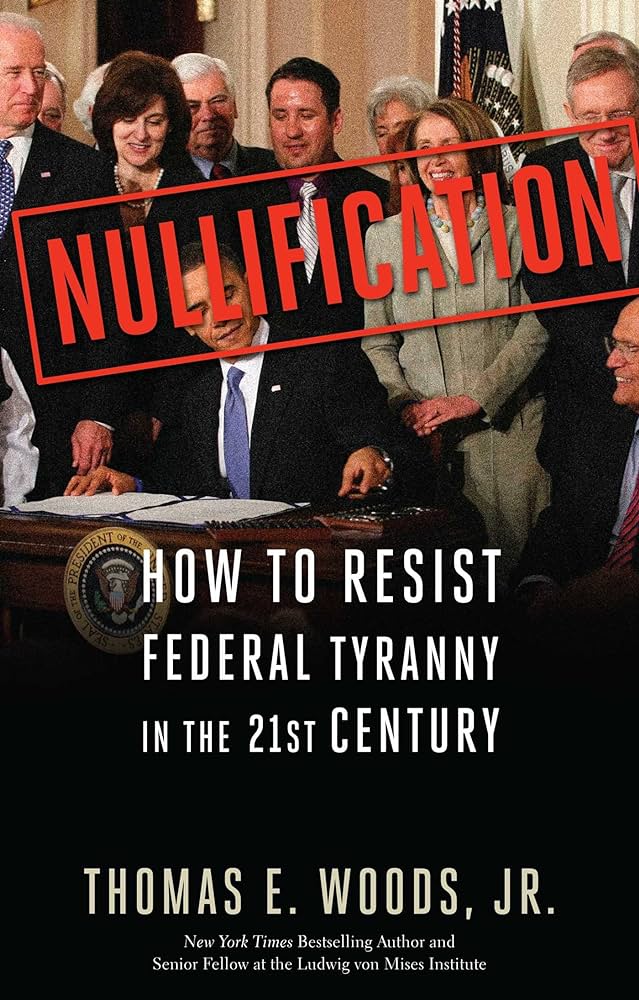
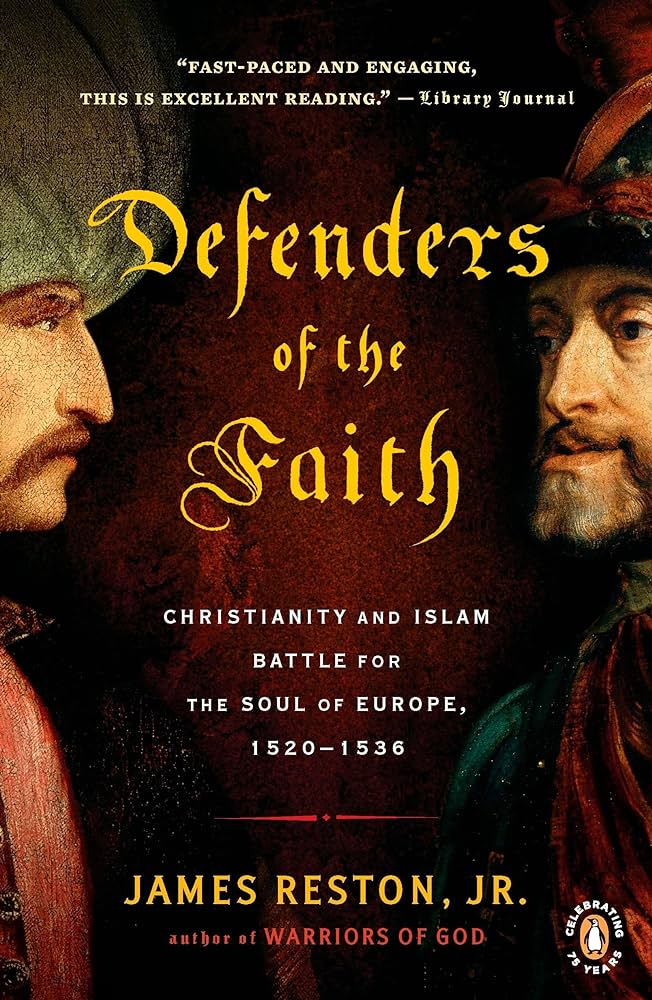
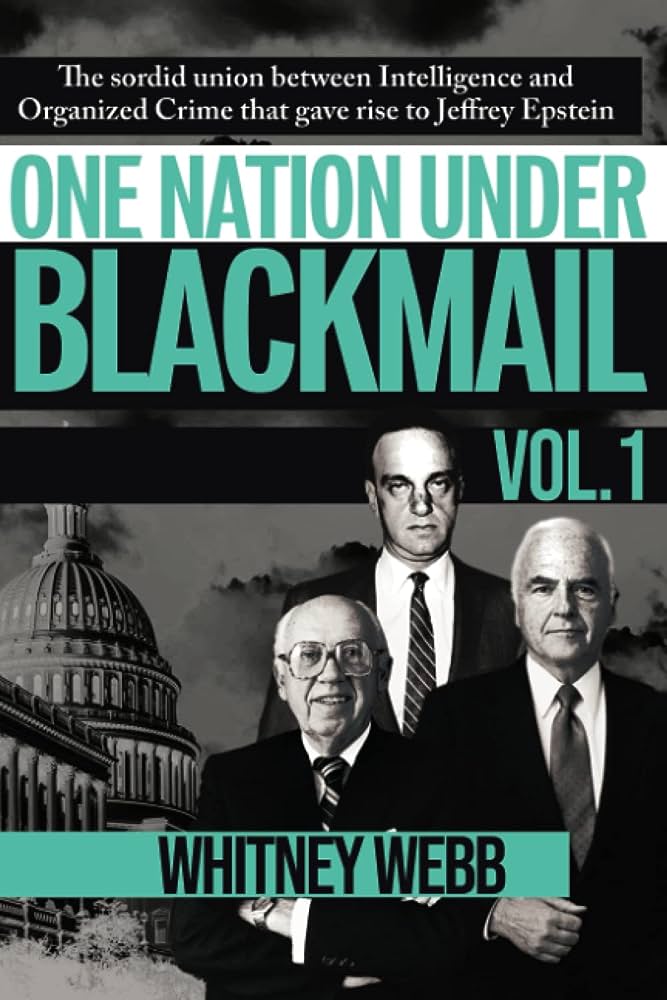
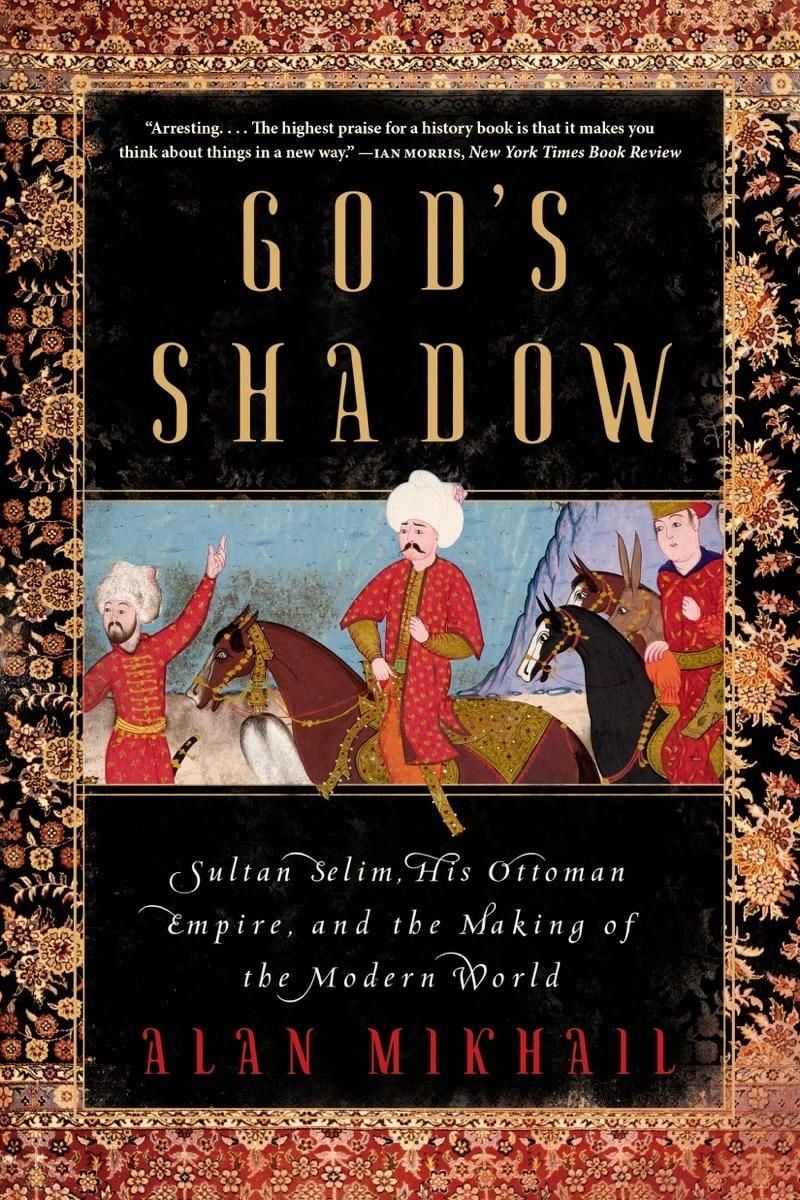
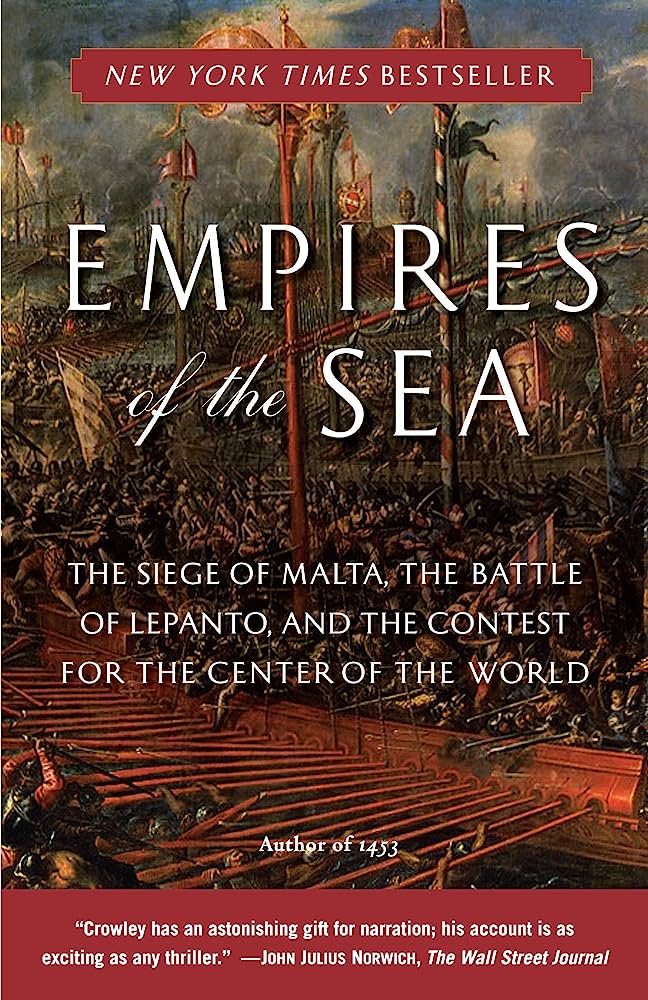
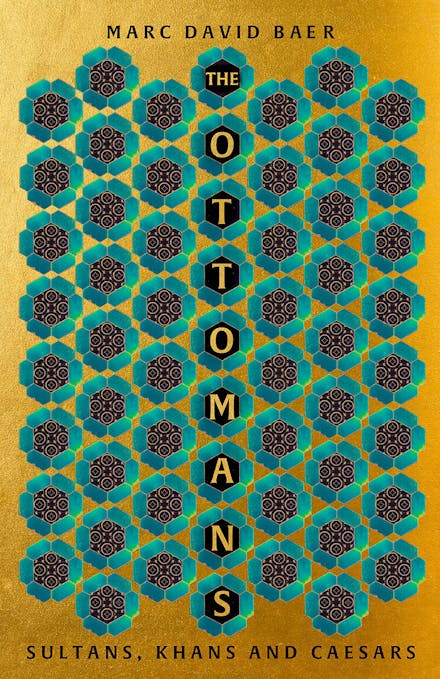
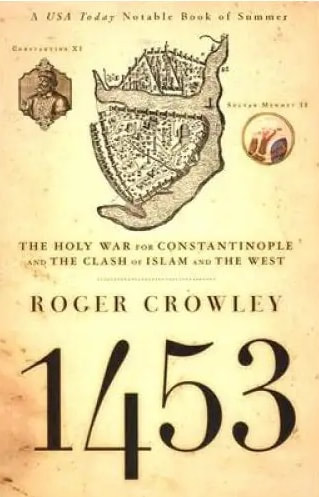
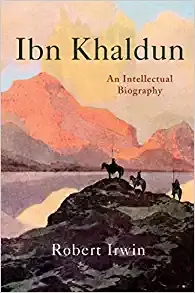
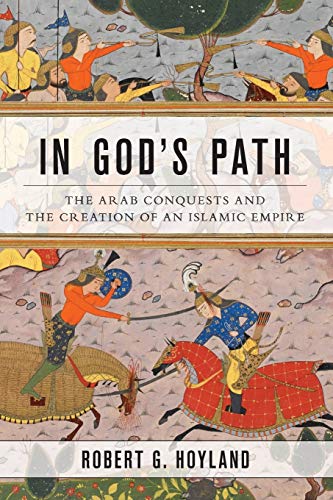
 RSS Feed
RSS Feed